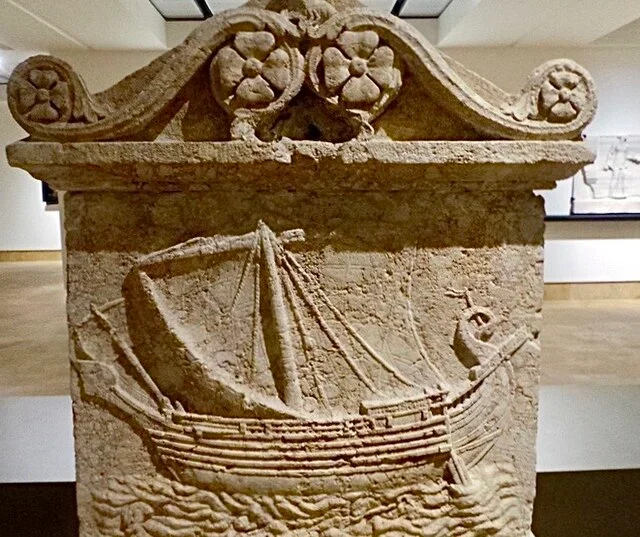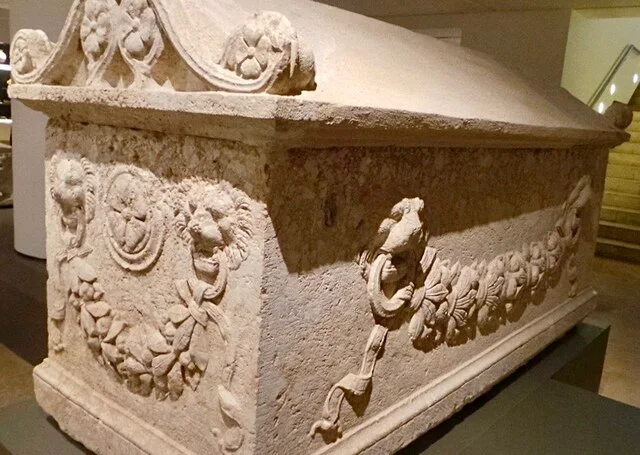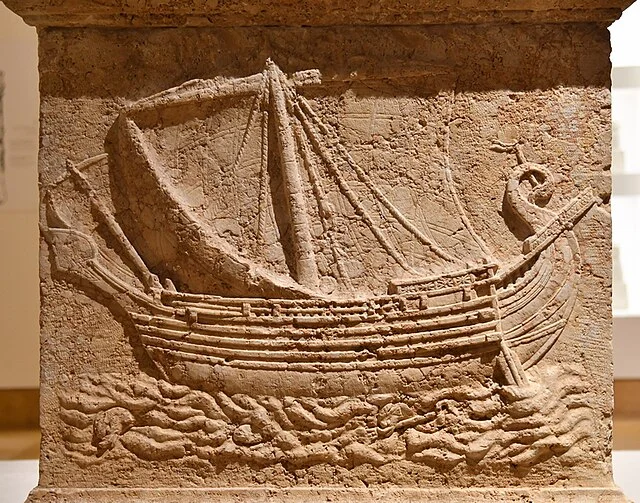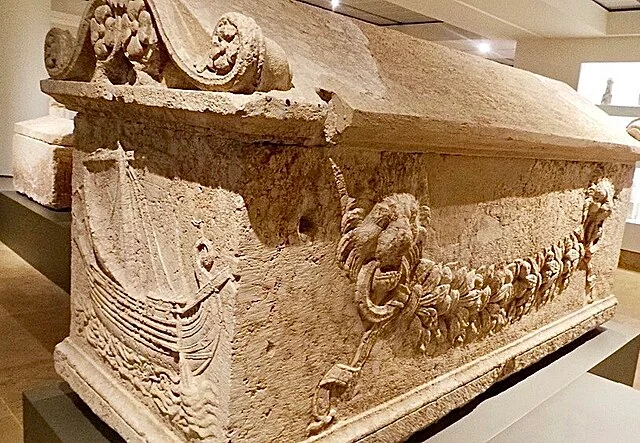The Ship Sarcophagus, dating from the late Roman period, represents a distinctive approach to burial practices in ancient times. This sarcophagus, found near the ancient city of Tyre in modern-day Lebanon, is notable for its intricate depiction of a ship in relief. Crafted from limestone, it offers insights into Roman funerary art, trade, and beliefs about the afterlife.
Get your dose of History via Email
Discovery and Context

Archaeologists uncovered the Ship Sarcophagus in the necropolis of Tyre in present-day Lebanon. This ancient Phoenician city, active since 2700 BC, was a significant hub of maritime trade. Its role in ancient shipping made it a suitable setting for a sarcophagus design linked to seafaring. The sarcophagus’s design is unique for its resemblance to a Roman vessel, emphasizing Tyre’s importance as a coastal city central to trade routes across the Mediterranean.
The Ship Sarcophagus dates to approximately the 3rd century AD, a period marked by Roman influence in the region. As Rome expanded, its art and culture mingled with local traditions, resulting in unique artifacts like this sarcophagus. The maritime scene in the relief hints at a possible connection to the deceased’s profession or social status, possibly suggesting they were involved in maritime trade or naval activity.
Design and Symbolism

The Ship Sarcophagus is carved from limestone, common in Roman sarcophagi of the time, and features a detailed relief of a Roman merchant ship. The ship is depicted with a curved hull, sails, oars, and a central mast, showcasing Roman nautical design. This depiction illustrates the technical knowledge and artistic skill of the period.
In Roman culture, ships often symbolized the soul’s journey to the afterlife. The ship in this context may symbolize safe passage to the afterlife, connecting to Roman and local beliefs about death and the soul’s journey. This imagery reflects the blending of Roman and Phoenician cultural elements, as Tyre itself was a city deeply connected to both seafaring and local spiritual traditions.
Historical Significance

The Ship Sarcophagus offers valuable insights into Roman funerary customs, maritime trade, and the importance of Tyre as a cultural and economic center. During the 3rd century AD, Rome relied on cities like Tyre to sustain its vast empire, using these regions for resources, crafts, and trade routes. Tyre’s history as a Phoenician city famous for maritime activities, combined with Roman influence, made it a rich setting for the creation of unique burial art like the Ship Sarcophagus.
Further, the sarcophagus reflects the Roman adaptation of local customs and symbols. Rome’s expansion often led to the incorporation of regional styles and themes into its art and culture. The Ship Sarcophagus is a prime example of this synthesis, blending Phoenician seafaring culture with Roman beliefs about death and the afterlife.
Conclusion
The Ship Sarcophagus stands out as an important artifact in understanding the cultural exchanges and funerary practices of the late Roman Empire. Its depiction of a ship represents both the deceased’s likely connection to the sea and broader symbolic meanings of safe passage into the afterlife. Situated in Tyre, a city central to ancient maritime trade, the Ship Sarcophagus serves as a reminder of the complex interactions between Rome and its provinces. This sarcophagus not only reflects ancient burial traditions but also highlights the enduring legacy of Tyre as a critical center of maritime history.
Source:

